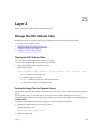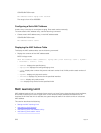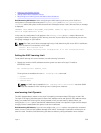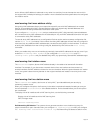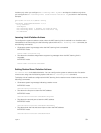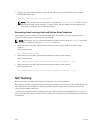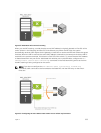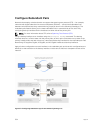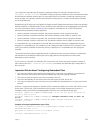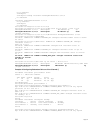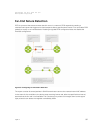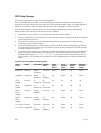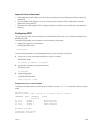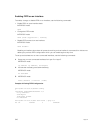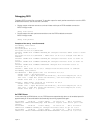
You configure a redundant pair by assigning a backup interface to a primary interface with the
switchport backup interface command. Initially, the primary interface is active and transmits traffic
and the backup interface remains down. If the primary fails for any reason, the backup transitions to an
active Up state. If the primary interface fails and later comes back up, it remains as the backup interface
for the redundant pair.
Dell Networking OS supports only Gigabit, 10 Gigabit, and 40-Gigabit ports and port channels as primary/
backup interfaces in redundant pairs. (A port channel is also referred to as a link aggregation group (LAG).
For more information, refer to Interfaces) If the interface is a member link of a LAG, the following
primary/backup interfaces are also supported:
• primary interface is a physical interface, the backup interface can be a physical interface
• primary interface is a physical interface, the backup interface can be a static or dynamic LAG
• primary interface is a static or dynamic LAG, the backup interface can be a physical interface
• primary interface is a static or dynamic LAG, the backup interface can be a static or dynamic LAG
In a redundant pair, any combination of physical and port-channel interfaces is supported as the two
interfaces in a redundant pair. For example, you can configure a static (without LACP) or dynamic (with
LACP) port-channel interface as either the primary or backup link in a redundant pair with a physical
interface.
To ensure that existing network applications see no difference when a primary interface in a redundant
pair transitions to the backup interface, be sure to apply identical configurations of other traffic
parameters to each interface.
If you remove an interface in a redundant link (remove the line card of a physical interface or delete a
port channel with the no interface port-channel command), the redundant pair configuration is
also removed.
Important Points about Configuring Redundant Pairs
• You may not configure any interface to be a backup for more than one interface, no interface can
have more than one backup, and a backup interface may not have a backup interface.
• The active or backup interface may not be a member of a LAG.
• The active and standby do not have to be of the same type (1G, 10G, and so on).
• You may not enable any Layer 2 protocol on any interface of a redundant pair or to ports connected
to them.
As shown in the previous illustration, interface 3/11/1 is a backup interface for 3/11/2, and 3/11/2 is in the
Down state. If 3/11/1 fails, 3/11/2 transitions to the Up state, which makes the backup link active. A
message similar to the following message appears whenever you configure a backup port.
02:28:04: %RPM0-P:CP %IFMGR-5-L2BKUP_WARN: Do not run any Layer2 protocols on
Te 3/11/1 and Te 3/11/2
02:28:04: %RPM0-P:CP %IFMGR-5-OSTATE_DN: Changed interface state to down: Te
3/11/2
02:28:04: %RPM0-P:CP %IFMGR-5-STATE_ACT_STBY: Changed interface state to
standby: te 3/11/2
Example of Configuring Redundant Layer 2 Pairs
Dell(conf-if-range-te-3/11/1-3/11/2)#switchport backup interface
TenGigabitEthernet 3/11/1
Dell(conf-if-range-te-3/11/1-3/11/2)#show config
!
interface TenGigabitEthernet 3/11/1
Layer 2
535



